I'm that black hippy making history not black history wait I'm that hippy getting trippy black is the colour of my face but shouldn't define my place in society ain't it free ain't I person first and foremost should that stop me from getting a top post
Gangster rap whys it gangster is it cuz I am black another subtle verbal attack
Contemplating visions just a figment of imagination want the true damnation on view but rather fantasy than reality to grounding with gravity pulling down no true voices around choices are limited truth never found
Had a dream it seems yet aspire to horse hair and contacts lighter faces trading places mixing up races go figure niggas calling niggas niggas killing pulling triggers on another they just called nigga circle of life na more like circle ain't right
Kkk lost its way hiding out but not finished at the end of the day still pray
Bleakness my street ness now a weakness damnation yet a so called one nation by labour big community by the conservatives i am i supposed act conservative what kind of nerve is this, hug a hoody yet no hoodies allowed here and there branded shop lifters dare devils not just because of the clothes We wear
street level dancing with the devil devoured by the lion outside sources prying too many young ones dying no praise for those who keep trying to keep clean on track despite all the set backs
concrete jungle cage fighting the rage aimed at the system roughed up cuffed driving in the back of state owned cars caged up behind bars disturbing the peace just to get a little piece of that cash
Too few champions in those kids eyes how they supposed to realise their worth how can they aspire and learn there true desires when the worlds run by liars aiming for one thing profit in their pockets
It's easy to play the victim to the system but what's a system without victims
Sent from my iPhone
Thursday 25 April 2013
The end of a friend
Da da da dude I don't mean to be ra ra ra rude but what you trying to prove got it all too lose with the lifestyle you choose I'm not amused feel abused more than used but you got to understand why you're out of the band tried too hard to reach promise land
Yeah you can play piano but your just the piano man, call yourself a musician man must be having a laugh dont want to put in the graft your times already past
Fame whore want that famous life a lot more than you want to work you're just a name dropping jerk who's out only for the perks
How you gonna get far when you spend all your time and money at mahiki's bar another hanger on well you won't hang on to this one
Dismissed its fine you've now past and crossed the line a faux wild child with constructed style straight out of vogues style pages
When you see CU chart it will tear at your heart to know that you could of been part of it too but you just wasn't serious or true boo hoo
Sent from my iPhone
Yeah you can play piano but your just the piano man, call yourself a musician man must be having a laugh dont want to put in the graft your times already past
Fame whore want that famous life a lot more than you want to work you're just a name dropping jerk who's out only for the perks
How you gonna get far when you spend all your time and money at mahiki's bar another hanger on well you won't hang on to this one
Dismissed its fine you've now past and crossed the line a faux wild child with constructed style straight out of vogues style pages
When you see CU chart it will tear at your heart to know that you could of been part of it too but you just wasn't serious or true boo hoo
Sent from my iPhone
Lovers and friends
You let your new boyfriend in on it all as that why you no longer call head over heels you weren't ready for the fall
Lovers and friends yet its easy to see who you'd rather spend all your time with never have time to hang anymore I'm just ignored
I don't even know what's up with you never get around to asking what's new all I see is photos tweets and posts in it all I see a ghost of the past a time when we all would laugh
I understand you want to discover you're new lover but there's a balance too remember the days before he came your way and remember who'll be there if he don't stay
Sent from my iPhone
Lovers and friends yet its easy to see who you'd rather spend all your time with never have time to hang anymore I'm just ignored
I don't even know what's up with you never get around to asking what's new all I see is photos tweets and posts in it all I see a ghost of the past a time when we all would laugh
I understand you want to discover you're new lover but there's a balance too remember the days before he came your way and remember who'll be there if he don't stay
Sent from my iPhone
Friday 19 April 2013
Tax payers whore
Tax Payers Whore
Nation of creation( work needed)
Scabs
9 2 5
Wednesday 17 April 2013
Fashion Photography: An Art Form?
There are fashion photographers who are artists yet use style bibles
and advertising campaigns for luxury houses as their gallery opposed to artists
working in fashion photography such as Ryan McGinley, Nan Goldin and Roe Ethridge
amongst others.
Yet there are those working exclusively
in fashion and fashion photography as their main medium. Names like Frederick Heyman, Tim Walker, Daniel Sannwald, Jason Evans & Damien Blotteire, come to mind In
the case of Sannwald, the image is usually constructed in his mind before it is
shot, and is manipulated in post-production to add elements to it, rather than
simply to perfect the model’s face or make the subject thinner. Blottière
similarly uses post-production add artistic elements to his work, whilst Jason
Evans starts out with an abnormal set-up for his shoots from the get go, through
the poses, lighting or subjects.
But
you only have to look at how these photographers are being embraced by the
industry in comparison with their more commercial contemporaries to realise
that fashion imagery has become too safe. It seems
its forefathers, such as Irving Penn and Richard Avedon, paved the way for
pushing boundaries and creating provocative, thoughtful and genius imagery,
only for the landscape now to be dominated by pictures that are fundamentally
quite simple and predictable in many aspects.
Mainstream
publications seem to shy away from allowing artists to create truly arresting
imagery. Editor of Husk magazine,
Trey Taylor, believes that commercial considerations
are the reason for this: ‘Fashion only survives because not everybody has it,
but everybody wants it. However, these relationships between photographer and
editor border on incest, with these ‘elite’ photographers recreating
predictable, jaded stories that the editors can depend on for filler, save for
ad pages.’
The
closest British Vogue comes to
embracing creative imagery is through the likes of Tim Walker. American Vogue could claim that of Annie
Leibovitz, who at times is able to create arresting imagery, yet predominantly remains
extremely safe. Taylor
Vogue has
its star names in photographers like Steven Meisel and Steven Klein. Meisel’s
work for Italian Vogue is often very
much of the times, such as his homage to Twitter and his celebrities in rehab,
as well as his work tackling harder-hitting topics like the Iraq
Rasharn
Agyemang, Fashion Director of RE-BEL,
feels the play-safe attitude is also present in other areas of the industry: ‘It
feels like it’s not just photography that has become safe, but fashion in
general: there are few individuals still willing to take risks and make people
dream. When I was growing up, there were the supermodels and Versace, further
on down the line Galliano, McQueen and Chalayan, and later on Gareth Pugh. I
don’t know any young designer that’s creating on these levels, yet thankfully
we have stylists like Nicola Formichetti, who inject fashion with a flair,
difference, creative energy, and who take the time to find new talent in design
and imagery.’
Both
Meisel and Klein are considered highly creative, yet you could question whether
they are ever really allowed to show their true creativity on the pages of the
magazines that feature their work. A typical example is the ‘Dogging’ story
created by Meisel for Italian Vogue
that was deemed to risqué, and found its way onto the pages of V magazine, one that embraces artistic
imagery. The simple fact is that creative directors for the big brands look to
photographers featured in larger publications for their future campaigns. These
are the clients who have the budgets that are now needed to produce, retouch, and
cast for the level of quality that is required. The smaller publications have modest
budgets in comparison to the might of a Condé Nast magazine – and yet they seem
to be the only environment in which a photographer is truly allowed to create.
Smaller,
independent publications allowed newer talent to flourish in the late 80s and
early 90s: Nick Knight, Wolfgang Tillmans, Juergen Teller, David Lachapelle and
Steven Klein all cut their teeth in magazines like i-D and The Face. But
many of those independent magazines have either closed or lost the spirit that
once defined them and made them unique. Many have caved into the commercial
demands and have compromised on artistic expression in a desperate fight to
please advertisers and keep themselves afloat. This means that few magazines allow
themselves the artistic freedom to risk working with younger names, and it remains
difficult for the next wave of talent to have their work published and
appreciated.
The
new generation of artists combats this through the internet, using blogs and
fashion websites such as Contributing
Editor and Ponystep, in which their
work can be seen outside of the printed page. Webzines and fashion magazine
websites allow for more opportunities to young artists, which they won’t get
from art directors and decision makers at places like Vogue and Harpers. Emerging
talent also benefits from magazines that are created by young people for young
people. Magazines like Hero and Husk show credibility and creativity,
yet remain commercially viable. Trey Taylor
Some
larger publications do push for artistic imagery: Interview and Dazed &
Confused are among the few doing so and have become known worldwide for it.
Interview has nurtured and supported
names such as Sharif Hamza, and Dazed
has allowed other new talent to shoot its front pages until they are ready to
shoot full editorials. Others who have been given this opportunity are Leon
Mark, Matthew Mumford, Fabien Kruszelnicki, and Alex Sainsbury. Damien Blottière
has also enjoyed exposure through Dazed,
dissecting the human form with his montages, as have Pierre Debusschere, whose
work resembles CCTV scans, and Ben Toms, with his muted tones and upfront
fashion portraiture.
However,
some feel that contemporary fashion photography is created by a select few,
with the landscape dominated by talent like Mert and Marcus, Mario Testino,
Craig McDean, David Sims, and even Steven Meisel and Steven Klein. These
big names repeatedly create editorials for the dominant glossy magazines, and
in turn create the adverts that are also on the same pages. It can be said that
fashion photography is informed by an elite few, and that a small group of photographers
shape how fashion imagery is consumed, through fashion magazines and through
mass-market advertising from a Times Square billboard down to a poster at a London
bus stop.
Every
magazine has its favourite photographers that they turn to time and time again,
comfortable with the fact that these image makers can create what is needed.
Even RE-BEL has its own roster of trusted
younger names (including Christian Oita, Ben Weller, Damien Blottière and
Daniel Sannwald), yet we understand the importance of continuing to nurture
newer talent such as Fabien Kruszelnicki, Cameron Alexander and Willem Jaspert.
We must nonetheless maintain a commercial outlook, and be wary of becoming too
abstract.
Opportunities
for true creativity are largely given to art photographers rather than fashion
photographers. These projects give a publication art kudos and a cover name to
help sales, but can overlook the talents of pure fashion photographers, instead
giving more exposure to art photographers, who may have the opportunity to
generate income from other sources – a luxury that fashion photographers do not
have.
The
power to change always lies with the next generation. With stylists like Robbie
Spencer, Katie Shillingford and Anna Trevelyan willing to take risks and
produce pictures that encourage artistic freedom for the photographer, and with
magazines like Husk, Dazed & Confused and Interview still willing to nurture and
publish young and artistic names, there is hope that fashion photography will
remain a respected art form.
Thursday 11 April 2013
Owen Jones the making of labour's new leader
Owen Jones is kind of like a breathe of fresh air easy to relate to on a variety of fronts youthful and with an air and presence that makes you listen his policies are interesting and its only a matter of time before he becomes a PM he has a growing fan base and that's what's needed seeing a leader become a leader the creation process and every bump and swerve they took to get there not just a wealthy etonian groomed and destined for the top spot he's definitely one to watch in more than one sense
Monday 8 April 2013
Infatuation
Infatuation
I don't find it fun I find it annoying, annoying that another could cloud my thoughts or change my mood how a phone call can pick me up and it's absence bring me down
I hate being at a stage an in between state of liking yet not knowing enough to truly know if you like all that's there as you've only touched the surface. The fluttering feeling that this could be something special something worth while yet tinged with the fact that it could also be like the others and only end in disappointment or furthermore heartbreak
I hate this feeling of losing control of falling yet not knowing when to land or where I hate this feeling yet love this feeling this state of confusion can not last it progresses or stagnates and either or to live is to love or to live is to learn
Sent from my iPhone
I don't find it fun I find it annoying, annoying that another could cloud my thoughts or change my mood how a phone call can pick me up and it's absence bring me down
I hate being at a stage an in between state of liking yet not knowing enough to truly know if you like all that's there as you've only touched the surface. The fluttering feeling that this could be something special something worth while yet tinged with the fact that it could also be like the others and only end in disappointment or furthermore heartbreak
I hate this feeling of losing control of falling yet not knowing when to land or where I hate this feeling yet love this feeling this state of confusion can not last it progresses or stagnates and either or to live is to love or to live is to learn
Sent from my iPhone
Idols and icons
Idols and icons
When does an idol become an icon and an icon an idol?
Any modern day celebrity is surely both an icon in their existence and an idol by their presence they exist to create and are present by their work and brand or brands. They've been made a brand by becoming an icon and being idolised that brand has allowed them to be felt beyond being seen or heard they can now be worn or smelt via their fragrances or clothing brands.
Coke is an icon yet is so revered and known it could also be an idol it exists and has a global presence it's the same wherever you go the poor drink what the rich drink its affordable and accessible and there's no higher level or lower level you simply get what you're given allowing for a form of equality in one sense or another.
Sent from my iPhone
When does an idol become an icon and an icon an idol?
Any modern day celebrity is surely both an icon in their existence and an idol by their presence they exist to create and are present by their work and brand or brands. They've been made a brand by becoming an icon and being idolised that brand has allowed them to be felt beyond being seen or heard they can now be worn or smelt via their fragrances or clothing brands.
Coke is an icon yet is so revered and known it could also be an idol it exists and has a global presence it's the same wherever you go the poor drink what the rich drink its affordable and accessible and there's no higher level or lower level you simply get what you're given allowing for a form of equality in one sense or another.
Sent from my iPhone
The lives of others
The lives of others
There's no age but this age that we've been so immersed in the lives of others yes folks have gossiped and papers have chronicled, scandalised, debated and discussed for an age but its this age that is the age where we put our lives out there more than any other. Of course what we put out there isn't the truest truth it's an image and ideal created, crafted and constructed by ourselves to project what we want people to see how we want to be perceived.
We Instagram our images, vine our visions, tweet our thoughts and Facebook all three
We used to watch the lives of others written by another yet what dominates the tv now is lives of others lived by another scripted reality not real real not fake situations created for the viewers pleasure yet how can a life be lived if the one living is aware of the moment to tweet is to step out side what you should or could be lost in, the cameras presence allows for the presence present to be supposed a supposed self an in between state trying to be real yet not real
How can we be who we are when we watch how others live repeat how others speak wear what others wear shop were others shop eat what others eat there used to be distance yet now the details of these details is on show but once again those eating what they eat could be sponsored to eat what they eat there's no authentic self on show and that's the issue we copy a constructed somebody a clone an image where is the reality in reality?
Sent from my iPhone
There's no age but this age that we've been so immersed in the lives of others yes folks have gossiped and papers have chronicled, scandalised, debated and discussed for an age but its this age that is the age where we put our lives out there more than any other. Of course what we put out there isn't the truest truth it's an image and ideal created, crafted and constructed by ourselves to project what we want people to see how we want to be perceived.
We Instagram our images, vine our visions, tweet our thoughts and Facebook all three
We used to watch the lives of others written by another yet what dominates the tv now is lives of others lived by another scripted reality not real real not fake situations created for the viewers pleasure yet how can a life be lived if the one living is aware of the moment to tweet is to step out side what you should or could be lost in, the cameras presence allows for the presence present to be supposed a supposed self an in between state trying to be real yet not real
How can we be who we are when we watch how others live repeat how others speak wear what others wear shop were others shop eat what others eat there used to be distance yet now the details of these details is on show but once again those eating what they eat could be sponsored to eat what they eat there's no authentic self on show and that's the issue we copy a constructed somebody a clone an image where is the reality in reality?
Sent from my iPhone
Fashion is a form of narcism to be fashionable is narcissistic so hipsterdom is the highest form of self indulgent, restless individuals searching for their self a true self an individual who's different separate from any other yet finds solace in other beings and other cult things yet to be in a cult no matter how divided from the mainstream is to be a collective to be a collective is to share a vision of to feel a thought and unites others so how independent is that?
Fashion is a form of narcism to be fashionable is narcissistic so hipsterdom is the highest form of self indulgent, restless individuals searching for their self a true self an individual who's different separate from any other yet finds solace in other beings and other cult things yet to be in a cult no matter how divided from the mainstream is to be a collective to be a collective is to share a vision of to feel a thought and unites others so how independent is that?
Trips to Africa or another 3rd world country is on trend a search for self to separate one self from controlled conditions and enforced states to be somewhere that's nowhere to marvel yet not help to think and feel how unfortunate these people are and how lucky you are. Nothing more than going to the zoo to look at contained stolen beauty at people's pleasure yet the animals cost a docile shell of the wonders of the wild.
People want to own beauty but beauty can never belong to anyone or thing, flowers bloom to die, beauty in people fades, art outlives its collector all that's left of true beauty in its purest form is an imitation a fake and in the search to be real to find real we become artificial and fake its ironically ironic
Sent from my iPhone
Trips to Africa or another 3rd world country is on trend a search for self to separate one self from controlled conditions and enforced states to be somewhere that's nowhere to marvel yet not help to think and feel how unfortunate these people are and how lucky you are. Nothing more than going to the zoo to look at contained stolen beauty at people's pleasure yet the animals cost a docile shell of the wonders of the wild.
People want to own beauty but beauty can never belong to anyone or thing, flowers bloom to die, beauty in people fades, art outlives its collector all that's left of true beauty in its purest form is an imitation a fake and in the search to be real to find real we become artificial and fake its ironically ironic
Sent from my iPhone
Sunday 7 April 2013
Outside Observers
A collection of London's young artistic minds working and living the creative life. We curate exhibits showcasing our work and those of others. Publish Magazines, dabble in fashion and film and put on events that bring together more minds to allow for debate, witty banter and all round good times.
Subscribe to:
Posts (Atom)

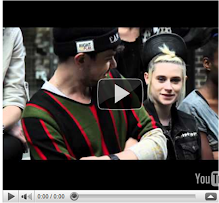
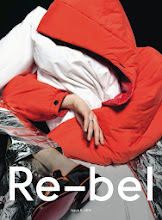
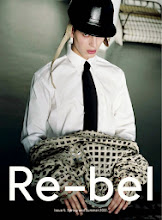



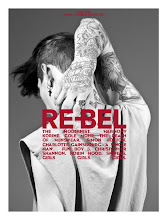



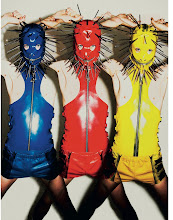
.pdf+-+Adobe+Reader.bmp)
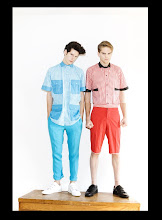

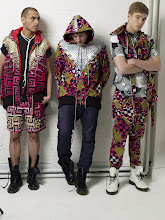
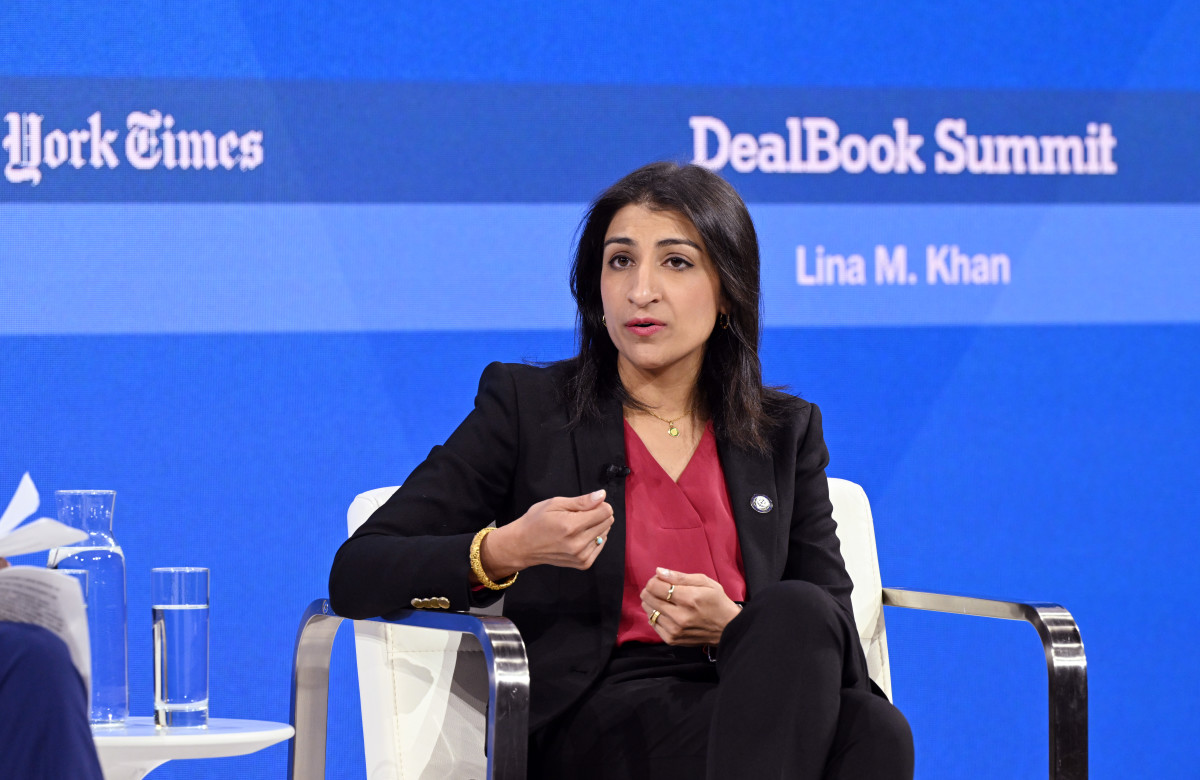






































.png)














































-3.jpg)




































